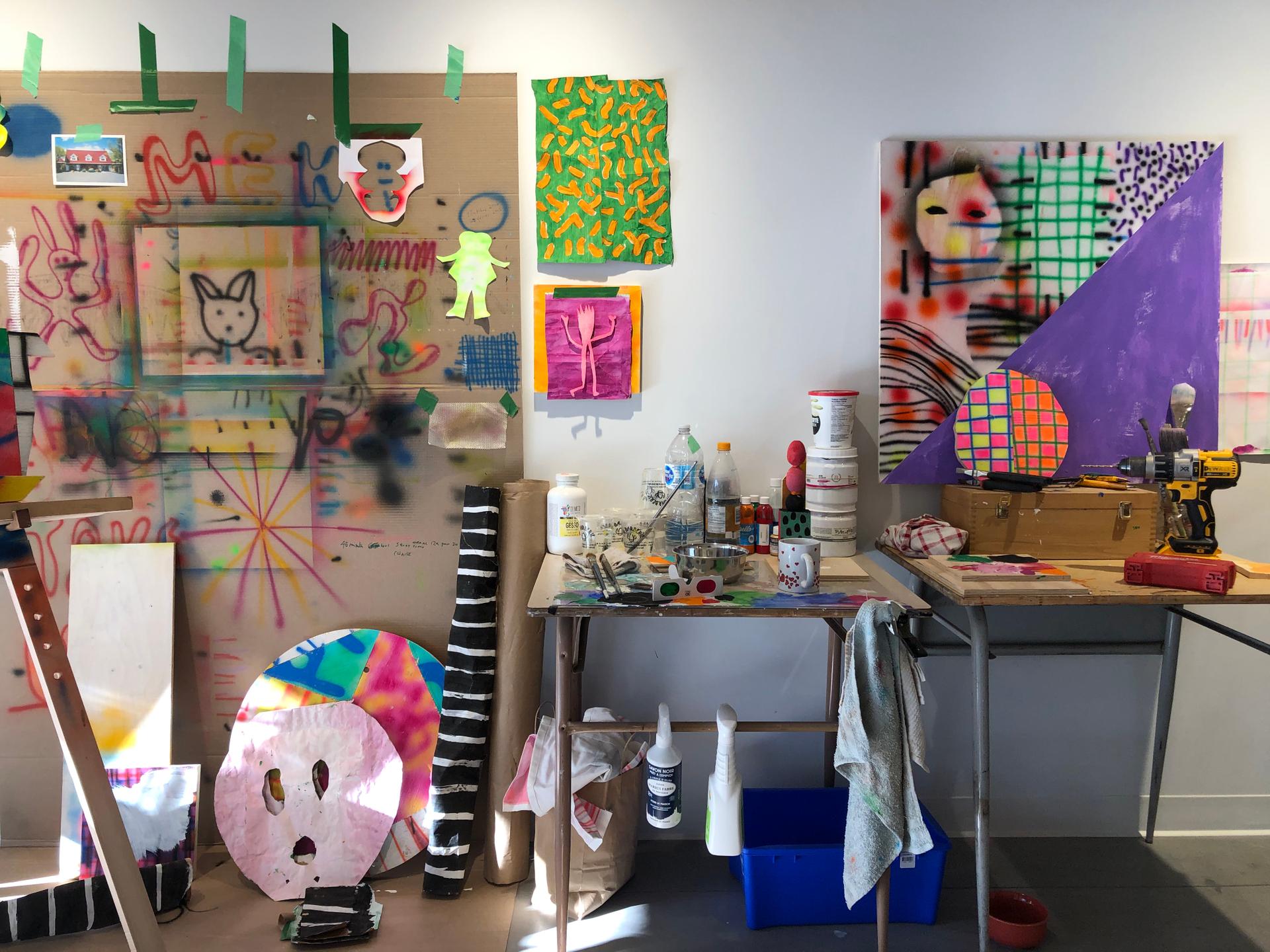Marie-Claude Lepiez
Moving Matter
Marie-Claude Lepiez’s practice involves a sustained interaction with the matter that she surrounds herself with. In the studio, scraps of plywood and cardboard boxes that were likely headed only for recycling are diverted from their fate by Lepiez, who engages with them in a process of erasure and transfiguration. She bases her gestures on the properties of the materials, combining them with motifs that usually allow them to retain the banal, indeterminate qualities that already define them. On a variety of surfaces neutralized by white paint, thus rid of their brand image, she airbrushes motifs in saturated colours – simplified faces, statements addressed to whoever sees them, in graffiti style. The undulating freehand lines and bright, dripping colours invent minor ornaments related to shapes that are sometimes angular, sometimes languid, often unsettled. As she observes their ways of being, of accumulating, of being together in the space, the figure of the artist as worker moves these forms, regroups them, cuts them up, manipulates them, arranges them, and moves them again. Depending on the relations that they develop between themselves and the bodies that approach them, they adopt, in turn, the role of support, figure, setting, prop, and character. They are thus called to action, finding different performance possibilities in unstable scenarios, in situations that evoke indifference, struggle, agitation, noise. The idea pops into my mind that Lepiez makes sculpture as one would body-surf – by abandoning herself to the contingent materiality of a bunch of objects that work with her.
A pink plywood electric guitar whose neck ends in a hand, green stiletto shoes made of carboard, the perplexed face of a rabbit-character sketched out in a few lines, profiles of eyeless characters outlined on pieces of wood, a long plank transformed into a banner on which is written “ahahahahahaha!!!,” a paper bag on the back of which is traced a vague “happy face.” The studio, which could also be called a lair, is populated with images, portraits, words, and costumes that offer a variety of beings, voices, exalted and fallacious presences. From this space, which may be thought of as in ruins before it is even constructed, emerge subjectivities inscribed in multiple forms, fleeting and unstable, that are impossible to distinguish. Entering Lepiez’s studio is a bit like losing one’s own voice in a concert of noise. Yelling in a crowd without anyone hearing is at once intriguing, tragic, terrifying, and liberating.
Biography
As a member of the Xennials micro-generation, I juggle my personal memories from this period at the crossroads of two generations; I try to re-create the glitch caused by the fusion of analog life and today’s technological ubiquity. I’m interested in the information that has been lost or has disappeared within this space-time.
The confrontation of eras, codes, and different ideas and cultures leads me to question certain prejudices with a sense of irreverence. By integrating and juxtaposing classic elements or traditions in a contemporary world, I can rewrite history and create a new one. It’s like a sort of poetry – futile, urban, and metal – in which temporality becomes ambiguous and memories of a past are transformed into an uncertain future. It is on these tracks of diversity, integration, and juxtaposition that I continue my research.
Discover
Newsletter
Keep up to date with the latest news!






